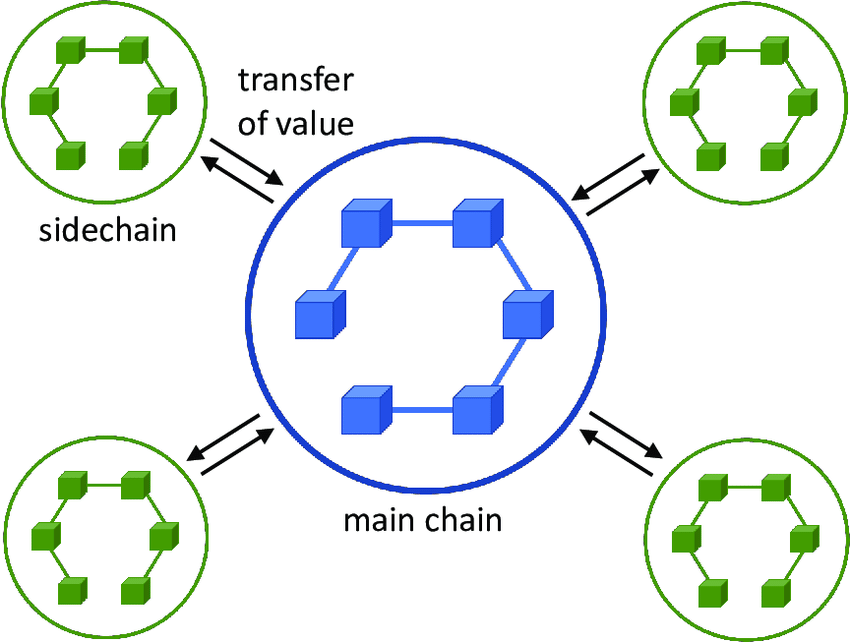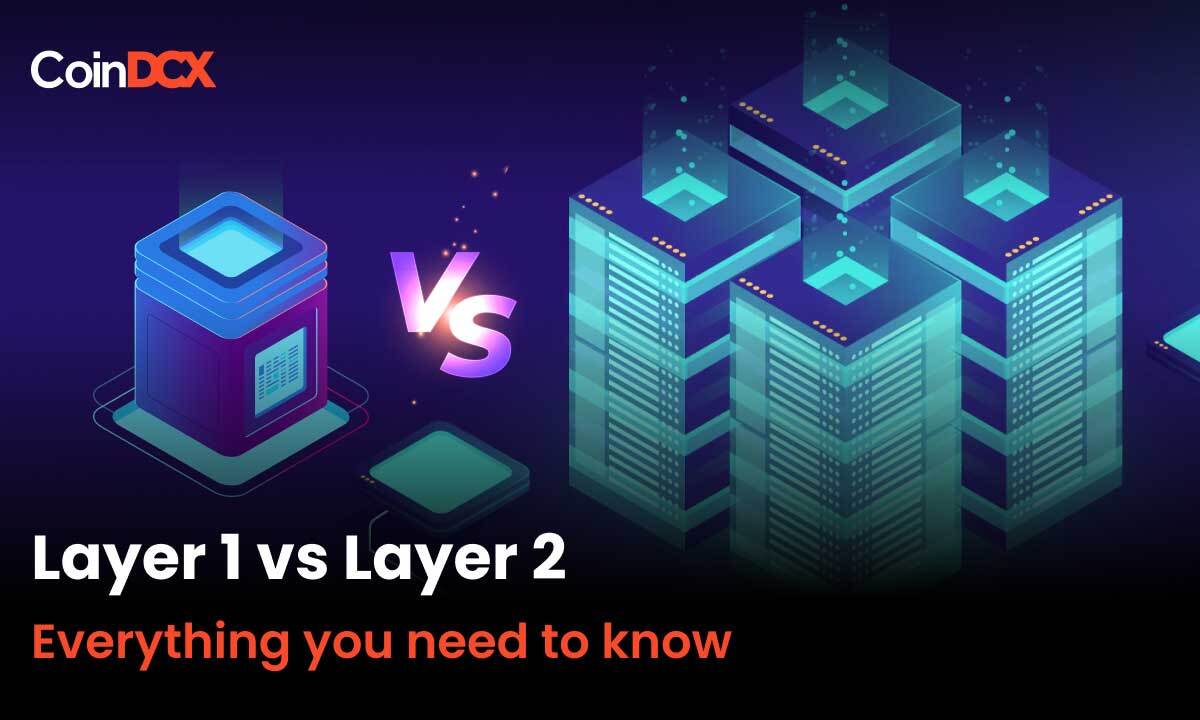Table of Contents
ToggleIntroduction
The most popular terms that have been used in the past decade within the technology reals, has been blockchain technology and its famous use case; i.e. crypto assets. During this time, along with the rise in popularity of crypto and blockchain, there has also been a surge in the number of users and transactions. With the number of applications and use cases that are being explored with blockchain, it is easy to see how revolutionary the technology actually is. However, scalability; which in a nutshell is the capacity of the system’s growth along with accommodating increasing demand; has been a challenge that the technology has been facing. The public blockchain networks which are highly decentralized in nature and are secure often struggle to provide this high throughput.
Before diving into the different form of scalability, better knows as Layer 1 and Layer 2 blockchain; let us take a quick scan of what Blockchain scalability is and why it is important.
Additional Read: Predictions For Future Of Crypto & Blockchain
What is Blockchain Scalability?
In a nutshell, blockchain scalability can be described as the ability of a network to provide support for the increase in the number of transaction taking place, as well as an the increase in the number of nodes in the network. The advancements that the technology has brought into the market, it has been facing a problem since long; which is known as the Blockchain Trilemma. This comprises the challenges that come with the increases scalability, decentralization and security in the blockchain infrastructure.
Among these three, scalability has an important role to play in the future growth of blockchain. Why? It is because scalability as a function stands for the capacity of any network to sustain the growing transaction throughput. Its function also makes it the key that determines the blockchain standards. To summarise, scalability is a measure of speed and efficiency that shows how many transactions can be processed and recorded within a specific timeframe.
What is Layer 1?
Layer 1, which is another name of the base blockchain. It is named so because this the main framework which helps in the workings of a network. The layer 1 scaling solutions are commonly referred to as on chain networking. To explain it further, some networks are referred to as layer 1 because they have their own token and they have the ability to process and complete transactions on their own blockchains. Apart from that, the most important advantage of layer 1 network is that their existing architecture does not require any customisation.
Read more: Blockchain in Healthcare Industry
How Does Layer 1 work?
In terms of the services provided by Layer 1 networks, there are several options available that Layer 1 blockchains cater to. They are increased throughput and overall network capacity. While looking at blockchains that are using Proof of Work consensus, a transition to Proof of Stake could be an option for them to increase their transactions per second (TPS) along with reducing the processing fees.
The solutions for the scaling problems on Layer 1 networks are usually introduced by the project’s development team. With regards to the solution, the network’s community will need to hard fork or soft fork the network. For example; the SegWit update of Bitcoin. The small changes like the SegWit update on Bitcoin are also backward compatible. Though changes that are larger, for example, increasing the block size of Bitcoin to 8MB, that requires a hard fork.
The examples above results in creating two versions of the blockchain; where one is with the update and other one is without. Apart from that, one other option to increase a network’s throughput is via sharding.
Sharding is a method which splits a blockchain’s operations across multiple smaller sections. These smaller sections then help in processing data simultaneously rather than sequentially.
What is Layer 2?
As the name indicates, Layer 2 blockchains are the ones which work upon the base blockchains in order to increase the scalability and efficiency of the network. As a layer 2 scaling solution, the protocol requires transferring of some of the transactional load of the blockchain protocol in order to adjust the architecture of the system. Following that, the network handles the processing load and reports back to the main blockchain to then finalise the results.
Read More: Top Layer 2 Crypto Projects
How Does Layer 2 Work?
Since layer 2 networks works on top of the base network, there are 4 well known methods that are usually being used. They are;
- Rollups
Better known as zero-knowledge rollups; they are a bundle off-chain Layer 2 transactions which are then submitted as one transaction on the main chain. The rollup systems are used to validate proofs in order to check the integrity of transactions. While assets are being held on the original chain with a bridging smart contract, the smart contract that confirms the rollup is continuing to function as intended. This provides the security of the original network with the benefits of a less resource-intensive rollup.
- Sidechains
Sidechains are an independent blockchain networks who have their own sets of validators. What does this mean? This means that the bridging smart contract on the main chain does not verify the validity of the sidechain network. As the workings are like that, one needs to trust that the sidechain is operating correctly as it’s able to control the assets on the original chain.

- State Channels
A state channel is a two-way communication environment between the transacting parties. The parties seal off a part of the underlying blockchain and connect it to an off-chain transaction channel.
- Nested Blockchains
Nested blockchains operate according to the rules and parameters set by the parent chain. The main chain doesn’t participate in executing transactions and its role is limited to dispute resolution when necessary.
Layer 1 Vs Layer 2: Differences
| Criteria | Layer 1 | Layer 2 |
| Method of working | Changes to the underlying protocol | Distributing the transaction load
among many blockchains |
| Implementation Approaches | Consensus protocol enhancement
and sharding |
Rollups, nested blockchain,
sidechains and state channels |
| Qualities | Innovation in the design of consensus
processes and native token |
Boost network speed, programmability
and lowering transaction prices |
| Limitations | Developers don’t make any
modifications to the architecture |
Users can make microtransactions
without no exorbitant transaction fees |
Future Of Layer 2
Before going into the future that Layer 2 is capable of, here are a few limitations that should also be know. Some of the limitations of Layer 2 are:
- It might remove liquidity from the primary blockchain
- There are potential security and privacy vulnerabilities; doing ones own research before using Layer-2 solutions is imperative
- They could impede interconnectivity with other Ethereum-based applications
With the limitations to Layer 2 blockchains, couples with the type of solutions available in the market, the Layer 2 blockchain projects and solutions on the Ethereum blockchain have become quite well known in the crypto ecosystem. They have most probably become one of the most common answers to the known blockchain scalability issues. The projects that are underway and this heavy focus on the technology, has the potential to promise a future with widespread adoption that is accompanied by low transaction fees. There are so many possibilities that are yet to be seen. The Ethereum Merge was just the stepping stone for the scalability issues that the technology has been working towards solving.
Conclusion
Scalability is the biggest reason for the mainstream adoption of the crypto space. To make sure that the base reason for the same keeps evolving with the ecosystem, Layer 1 and Layer 2 scaling solutions are being built and revamped. In a nutshell, Layer 1 and Layer 2 are two sides of the same scaling solution. As a result, they have a strategy in place to make the blockchain network faster and more accommodating for a rapidly growing user base.
Read more: How Blockchain is used in Education
Related posts
Understanding the Different Types of Cryptos: Coins, Tokens, Altcoins & More Explained
Explore the major types of crypto assets and their unique roles.
Read more
PAWS Telegram Game: The New Tap to Earn Game That Is Beating Hamster Kombat
Discover how to play and earn with PAWS Telegram game.
Read more


